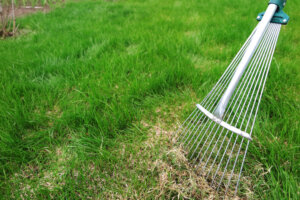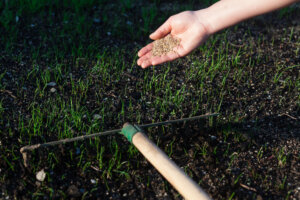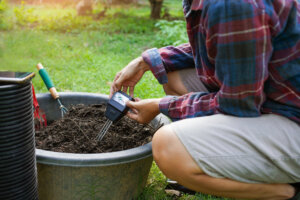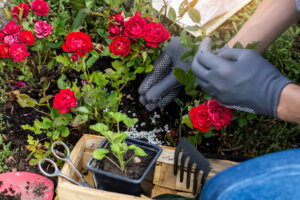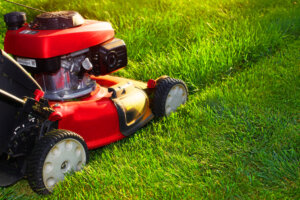For many, spring brings to mind visions of melting snow, flowers in bloom, and of course, lush green grass. Now, have a look outside. Unless your grass is somehow not susceptible to cold (or artificial), it’s likely that your backyard is looking more like a desert wasteland than a green wonderland. Lucky for you, we know some tips and tricks that can bring your lawn back to life in time for the outdoor season. Here’s HomeStars’ guide to spring lawn care.
1. Clean Up
The first step in your spring lawn care routine is removing debris from your yard. Throw away the trash and put twigs, branches and leaves in the compost. You’ll want to make sure that sunlight will be able to reach the roots of your lawn once the sun starts shining.
If your lawn is bogged down by layers of debris and your soil is obscured, it’s possible your lawn will need professional attention. Over time, material steadily builds up around the roots of your grass, forming a layer of what pros refer to as thatch. In order to remove this layer, your lawn will either have to be power raked or de-thatched. These processes are hard on your grass and can even destroy a healthy lawn when done without need, so it’s best to consult a landscaper before proceeding. In most cases, you’ll be able to clean up your lawn sufficiently with a few helping hands and a strong rake. Or better yet, have a landscaper or handyman can take care of this step for you. Grass clear of debris is the first step towards a healthy and lush lawn.
2. Aerate
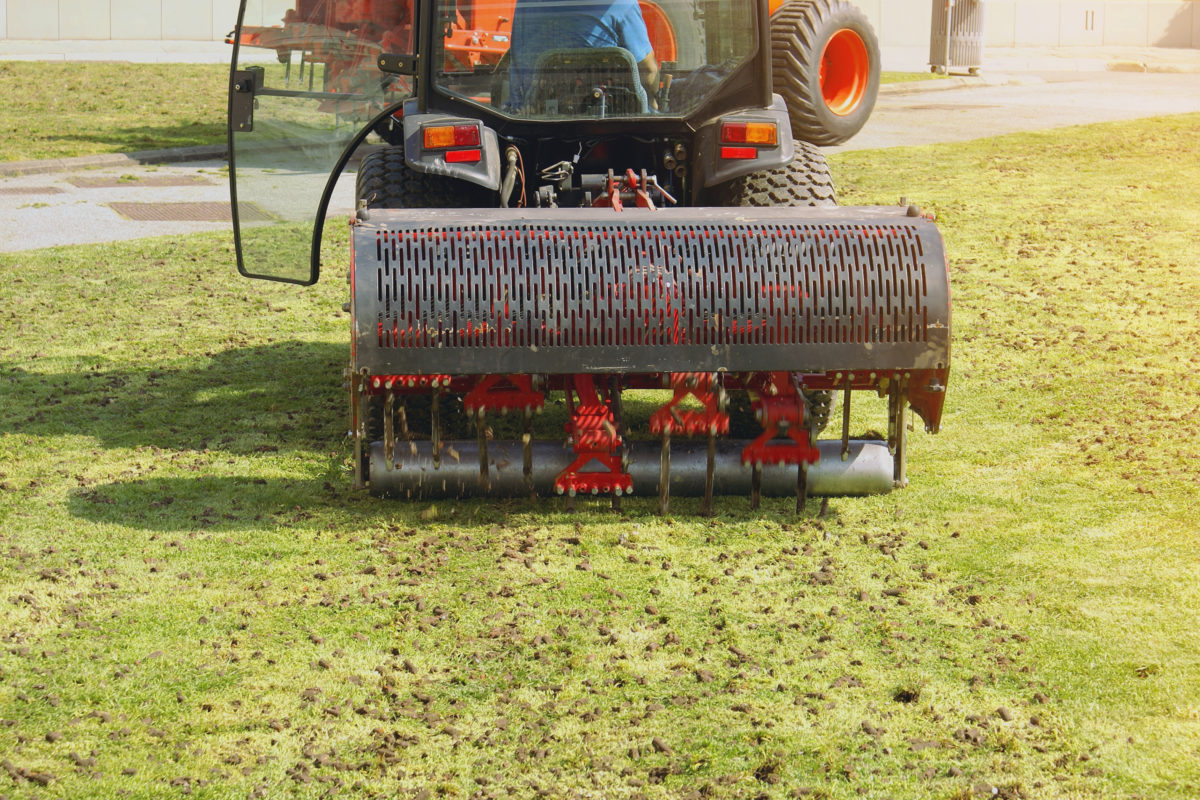 Aerating refers to the process of pulling out small circles of soil from your lawn in order to allow air and other nutrients to reach its roots. Many homeowners and landscapers also chose to add a layer of “top-dressing.” This nutrient-rich addition will not only help the soil on the surface but also improve the quality of the deeper layers of your soil. It’s best practice to aerate your lawn annually, however, the machinery is bulky and hard to operate. For this reason, we recommend enlisting the help of a professional landscaping company. It will be well worth your while – a lawn that is aerated regularly requires less fertilizer and de-thatching down the line.
Aerating refers to the process of pulling out small circles of soil from your lawn in order to allow air and other nutrients to reach its roots. Many homeowners and landscapers also chose to add a layer of “top-dressing.” This nutrient-rich addition will not only help the soil on the surface but also improve the quality of the deeper layers of your soil. It’s best practice to aerate your lawn annually, however, the machinery is bulky and hard to operate. For this reason, we recommend enlisting the help of a professional landscaping company. It will be well worth your while – a lawn that is aerated regularly requires less fertilizer and de-thatching down the line.
3. Overseed
The key to a weed-free lawn is a combination of aerating and a process called over-seeding. If your lawn is looking sparse, we recommend requesting that your landscaper add a topsoil top-dressing after aerating. Contrary to popular belief, you can seed in cold weather, and in fact, cold temperatures encourage sprouts to establish roots quickly. Once you’ve seeded over your lawn, it’ll need to be watered daily for the first week at a minimum. If possible, you should be watering new seed until its growth has caught up with the existing grass.
4. Lime
Unsurprisingly, over the course of winter, snow and rain wash away nutrients from your soil, turning it acidic. Your lawn is sensitive to the soil’s pH balance, which is one of the reasons your grass looks so beat up come spring. Adding lime will make your lawn less acidic, and your grass happier and healthier. Experts recommend calcium lime from eggshells over their rock counterparts. To determine your best option, get in touch with a landscaper who can point you in the right direction.
5. Fertilize With Care
Another way to nourish your lawn is to fertilize. Look for a slow release fertilizer and make sure to familiarize yourself with the fertilizer’s nitrogen, phosphorus, and potassium content, and how these levels impact growth. These readings can be hard to understand, so it’s best to consult with a pro who knows their stuff before committing to long-term treatment. This is especially important given the fact that certain fertilizers can be harsh on the environment and even somewhat dangerous.
6. Water
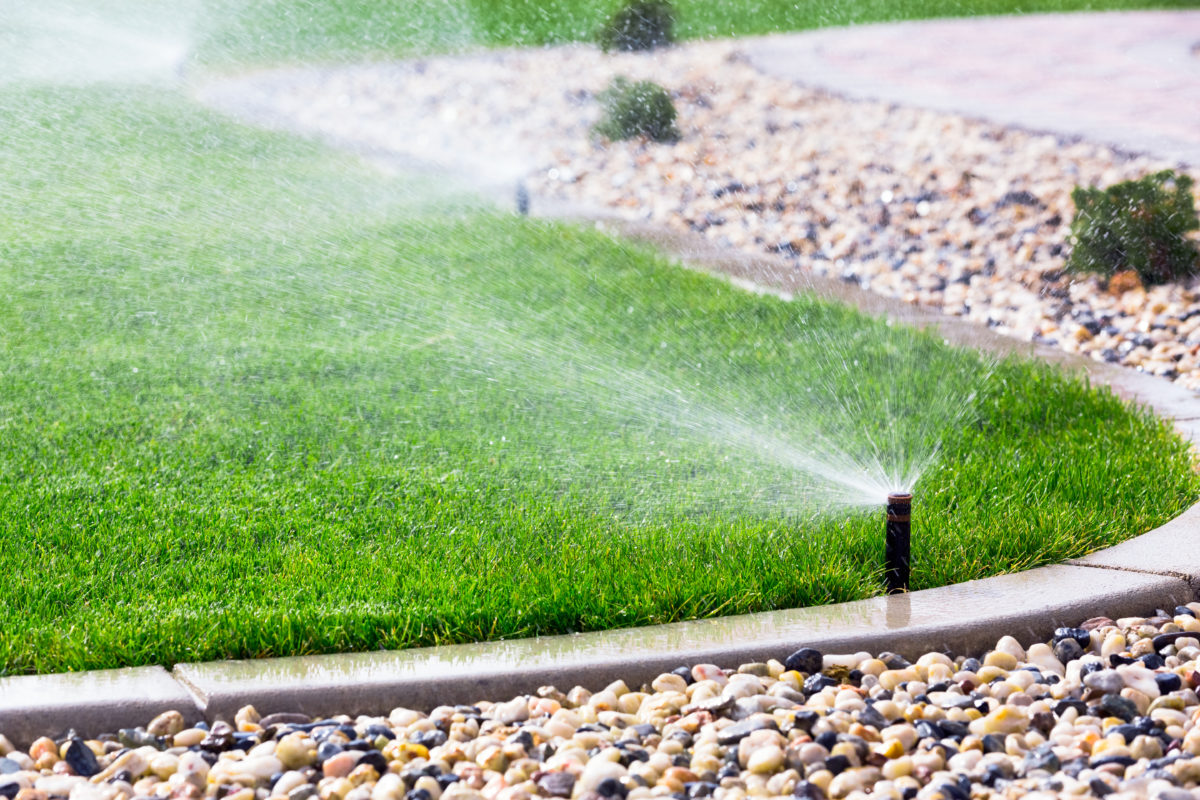 Like most living beings, a huge contributor to your lawn’s health is water. Pros recommend watering your lawn three times a week, ideally in the early morning. Watering in the afternoon can lead to evaporation, and watering in the evening can lead to excess water. Busy schedules can interfere with this regimen, which is why many homeowners have turned to automatic systems. These systems can be programmed to run for specified amounts of time at a certain time of day. If you act quickly, you can have your system installed and your lawn looking lush in time for summer.
Like most living beings, a huge contributor to your lawn’s health is water. Pros recommend watering your lawn three times a week, ideally in the early morning. Watering in the afternoon can lead to evaporation, and watering in the evening can lead to excess water. Busy schedules can interfere with this regimen, which is why many homeowners have turned to automatic systems. These systems can be programmed to run for specified amounts of time at a certain time of day. If you act quickly, you can have your system installed and your lawn looking lush in time for summer.
7. Mowing
Last but not least, we have a few tips for mowing your lawn. First of all, have your mower’s blade sharpened annually. You may not realize it, but a dull blade will actually stunt the growth of your grass by making it more prone to disease. The first mow of the season should be done on a lower setting than usual. You never want to remove more than one-third of the grass’ blade, or you could do permanent damage. That being said, the best part about lawn mowing is the fact that there are innumerable landscaping services who offer affordable seasonal prices. Browse your neighbourhood options on HomeStars, then sit back, relax, and let the experts work their magic.
How much will your spring lawn care cost? Below are the average costs of Landscape Contractors & Designers services across different cities in Canada:
| City | Average | Minimum | Maximum |
| Barrie | $8,581 | $1,200 | $40,000 |
| Calgary | $10,015 | $100 | $50,000 |
| Edmonton | $5,936 | $102 | $50,000 |
| Hamilton | $11,382 | $105 | $50,000 |
| Oshawa | $8,223 | $100 | $50,000 |
| Ottawa | $10,506 | $100 | $50,000 |
| Toronto | $11,047 | $100 | $50,000 |
| Vancouver | $10,053 | $145 | $50,000 |
*Costs based on 3751 verified Canadian homeowner reviews as of March 2022
With this guide and a little hard work, your lawn will be restored to its former glory in no time at all. We know that most of you don’t have the time (or patience) to literally watch grass grow, and with so many skilled landscapers across Canada, you don’t have to. Head to HomeStars.com to find a reputable landscaper near you!
Article updated June 15, 2022.

